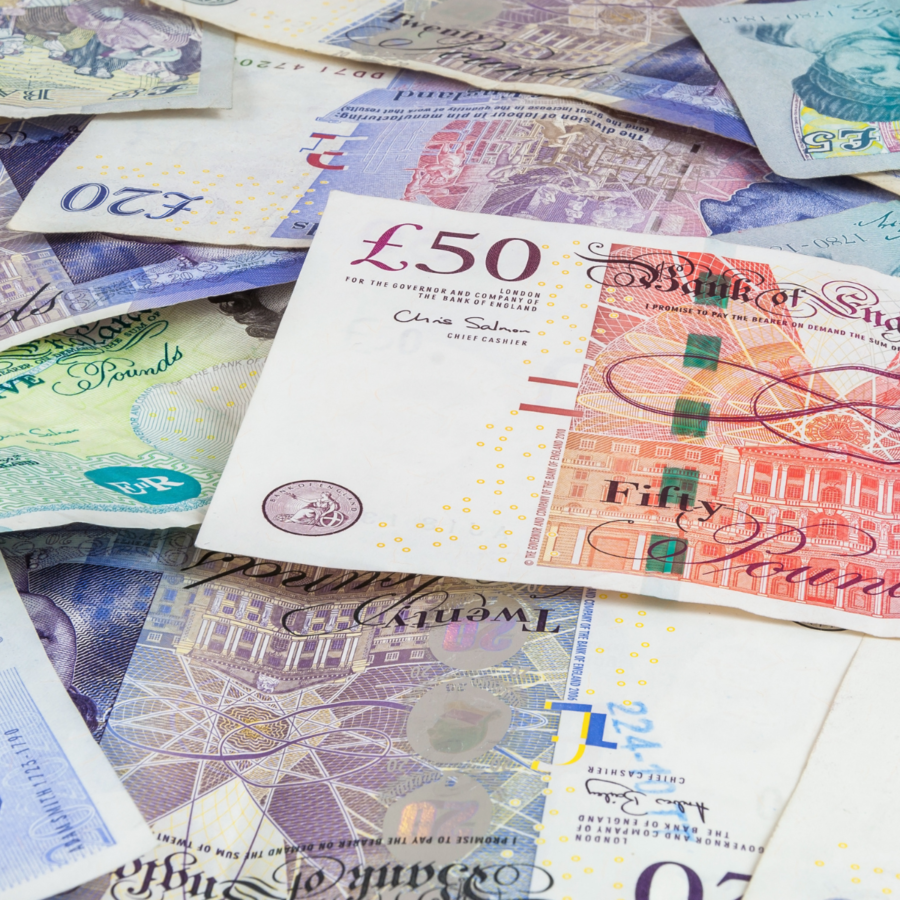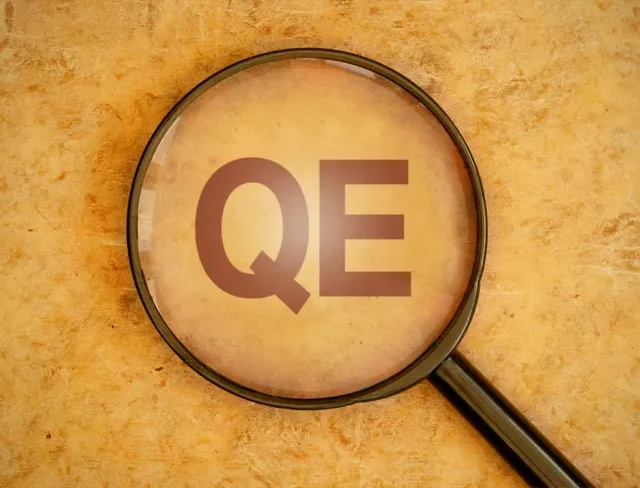When is it OK to Produce Money?
What effect does money production have on the economy, and how does quantitative tightening help influence the supply of money? Exploring some of these key areas, Ed Cornforth – an economist at NIESR – speaks to Stephen Millard, for our latest Monday Interview.

Let’s start with the obvious question: what is money?
The textbook answer suggests money has three properties:
- It is a unit of account; it is a measuring stick with which we can approximate the relative value of goods. How can we compare apples to cheeseburgers to videogames without some common valuation?
- It is a store of value; in a stable economy (low inflation) a £10 note should be able to buy you roughly the same amount of goods as time continues. Contrast this to, say, a pint of milk which will definitely not have the same value as time progresses (although its value as a cheese may increase…)
- It is a medium of exchange; others will accept its value in exchange for goods.
The final point confronts us with the very social role money has; for its value to be accepted, people need to believe in its value. There needs to be a critical mass of people who believe it will be accepted and exchanged, and are willing to part with it, for it to function as money. This point alone can lead to valuable insights when thinking of the adoption of cryptocurrencies and why they may succeed or fail as alternatives to money.
On a deeper level still, money is a formalisation of social interactions and how we relate to one another. Economists to anthropologists have noted how it has taken over the role of mutual, social debt obligations. David Graeber speaks about how debt was a key social concept long before it was formalised and quantified into bank loans, and Narayana Kocherlakota speaks of money as synonymous with memory: money is a way for us to remember what we owe to one another in a complex and interconnected world. The more money you have the more you can reclaim from society, like a person saying “remember how I created that spreadsheet for you last month? I’d like a cheeseburger now.”
So how exactly is money produced? On a printing press?
How money is produced, and who can produce it, depends on its type. Physical cash, the notes and coins in circulation, are produced by the Bank of England and the Royal Mint, respectively. These are literally printed – on a press – and minted, partly to replace old cash, and partly to meet the demands for cash considering inflation and economic growth.
But hardly any of us use cash these days, in fact it only accounts for about three per cent of total money in circulation. Most money today is created through commercial bank lending. When a commercial bank creates a loan, they also create an equivalent bank deposit. But, given lending is profitable, what stops a bank from lending an infinite amount, i.e., what creates a limit on the production of money?
Firstly, the demand for loans needs to exist. Banks cannot lend money to people who don’t want to borrow.
Secondly, banks need to ensure that their present cash flows are met. Think of an ATM: a bank must ensure that they have enough cash available for you to withdraw from them. It’s highly unlikely that you will withdraw your whole account at once, but you may need a bit daily, so the bank must ensure that they have this available. If I have £100 in my account but only need to withdraw £10 cash, the bank only really needs £10 cash. This liquidity requirement on the bank acts to limit their creation of deposits.
Thirdly, banks need to ensure that they can cover unexpected losses. This forms the basis of capital requirements on banks. Think of it this way: I start a bank and put in £10 of my own money; I then lend out £100 to my friend (requiring the creation of £90 of liabilities for me) to set up a lemonade stall, absolutely convinced that the lemonade industry will last for hundreds of years. My capital ratio is ten per cent (£10 / £100). However, due to a catastrophic and unforeseen collapse in the homemade lemonade market, the loan goes bad and my friend can only pay back £90. At this point, it’s actually okay because I can cover the liabilities I created with the money they paid back; my bank avoids bankruptcy and the economy continues happily.
And what impacts does the production of money have on the economy and do these impacts depend on how the money is produced?
Broadly speaking, the creation of money has two key impacts. Firstly, it can enable inflation, and secondly, it can restructure the economy.
The link to inflation makes intuitive sense. Say you have two apples and two coins; each apple would be worth one coin. But if you increased the number of coins to four but kept the number of apples the same, each apple would now be worth two coins. This links to the famous Quantity Theory of Money. It’s important to note here the relation to the growth of the economy; if the economy grows (three apples instead of two) the amount of money would need to increase (to three coins) for the price to stay the same (one coin per apple).
The second effect, known as the Cantillon effect, means prices can change relative to each other depending on where the money is created. If we have one apple and one orange, a person who likes apples and a person who likes oranges, and each has one coin then the apple and the orange will be worth one each. If we create one coin and give it to the orange person, then they will presumably buy an orange and can now be charged two coins for it. The relative prices have changed from a 1:1 cost of apples to oranges ratio to a 1:2 ratio. A specific form of this effect is the first-round effect, which says that the first receiver of the new money has large purchasing power relative to the rest of the economy and can outbid their competitors; however, as time goes on and the money filters through to the rest of the economy, the quantity theory takes over and prices rise in general. The first receiver has now lost their initial advantage.
The size, shape, and persistence of the Cantillon effect depends on a huge variety of factors, such as how long until the money disperses into the wider economy, how long the increased demand can sustain itself for without any new money injections, what receivers want to do with the money, elasticities of supply, expectations of price movements, how quickly prices will adjust, long-term maintenance costs of new capital bought with the new money, and much more.
Finally, the Bank of England is poised to start Quantitative Tightening on 1 November. Does this correspond to ‘money destruction’ and what effects might it have?
The original aim of Quantitative Easing was to stimulate the economy through lowering the interest rates via the bond market; money was created to buy bonds, which drove their relative price up and so lowered the interest rate across the market. Lower yields on government bonds make riskier assets suddenly look better in comparison. The result is more lending, more investment, and a growing economy. This is entirely driven by the very specific focus of the money creation on the bond market, essentially using the Cantillon effect to bring about a change in the relative price of bonds to other assets, achieving the central bank’s goal of raising investment and, so, aggregate demand.
Now imagine this process in reverse, and that’s effectively what happens with Quantitative Tightening; inflation is too high, the economy is running too hot, so long and short-term interest rates need to be influenced upwards to tame inflation. Central Banks can do this in a more relaxed manner by letting the bonds they own mature without replacement or more aggressively by selling bonds back into the market. Either way, the supply of bonds increases and pushes their price back down.
Thinking of QE/QT in terms of money production/destruction can muddy the water by making people overemphasise the liquidity channel of QE/QT, while the focus should be on the interest rate transmission mechanism. On the other hand, thinking in terms of Cantillon Effects and the Quantity Theory of Money can provide some interesting insights into understanding the asymmetry of QE and QT – that is, the reversal of the process is not necessarily a reversal of the effects. In QE, money is focussed into bond markets and then dispersed throughout the wider economy via the financial markets, but there is less control as to what happens to that money afterwards, i.e., where it goes in QE and where it comes from in QT. This could lead to asymmetrical distributional and growth effects.











